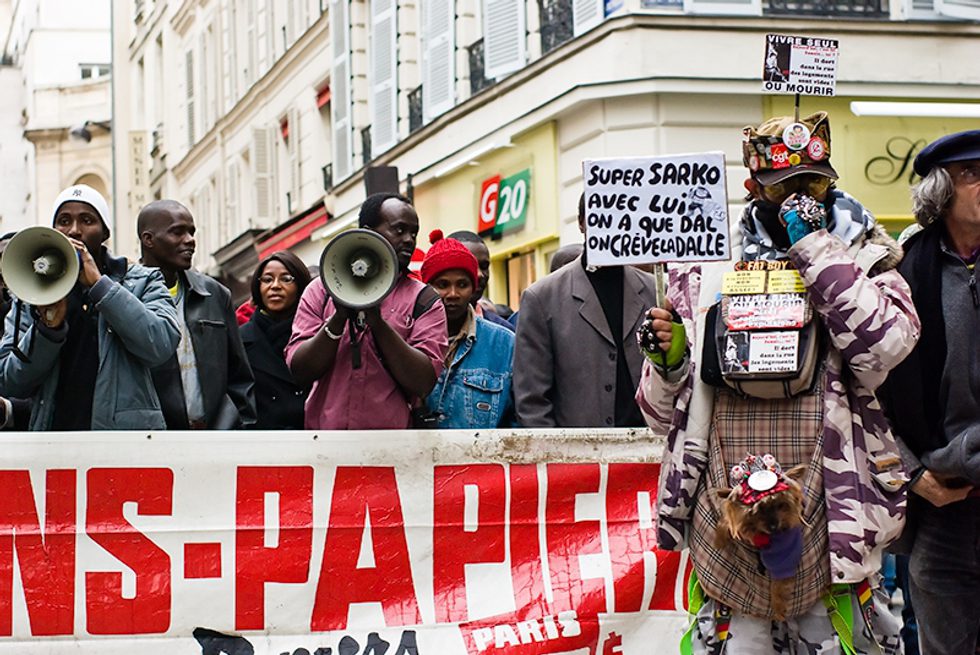
Recently, the issue of Muslims living in and emigrating to various parts of Europe has been receiving much attention as difficulties with xenophobia and racism are being juxtaposed with so-called problems arising with illegal immigration. In France, particularly, debates on these issues dominate both the public and the private sphere. Concerns around Islamophobia have become very unique and specific to the French context and are now the source of much contemplation and analysis.
In France, the question of whether it is possible to be both French and Muslim remains highly contested. Can a person of immigrant background be both an ideal republican citizen and a faithful practitioner of Islam? Moreover, should questions such as this one even continue to be asked, given the large number of Muslims who are already part of the nation and have been for years? As many as five million Muslims consider France to be their home country, although only half of them hold French citizenship, and Islam has become the second-largest religion in the country. Muslim identity in France is riddled with marginality, juvenile delinquency, and increasing poverty while at the same time marked by “a return to Islam” (Ramadan 1999, 9; see also Brouard and Tiberj 2011). It is interesting to note that “the percentage of Muslims is highest among eighteen- to twenty-four-year olds and then decreases with age” (Bourd and Triberj 2011, 13). This statistic points to the salience of discontent amongst French youth of immigrant descent. Is this due to an inherent incompatibility between French and Islamic cultures? Instead of this reductionist explanation, we would do well to consider a structural problem within the French citizenship and nationality system. Here, we must contemplate the differences between legal and cultural citizenship and the conflicts that can arise from the gap between these concepts. This Teaching Tools post provides instructors with a set of readings, discussion questions, and class activities that will help students understand Muslim immigration and integration in France.
Learning Outcomes
After this lesson, students should:
- Be aware of the complex issues surrounding Muslim immigration to France.
- Understand how the French concepts of republicanism and secularism, or laïcité, affect both public and private sentiment toward Muslim immigrants.
- Understand how France’s colonial history plays into France’s immigration politics.
- Have a new perspective on the global dimensions of immigration and the issues that many immigrants face.
Readings
Albahari, Maurizio. 2015. Crimes of Peace: Mediterranean Migrations at the World's Deadliest Border. Philadelphia: University of Pennsylvania Press.
Asad, Talal. 2002. “Muslims and European Identity: Can Europe Represent Islam?” In The Idea of Europe: From Antiquity to the European Union, edited by Anthony Padgen, 209–27. New York: Cambridge University Press.
Bowen, John R. 2007. Why the French Don't Like Headscarves: Islam, the State, and Public Space. Princeton, N.J.: Princeton University Press.
_____. 2011. Can Islam be French? Pluralism and Pragmatism in a Secularist State. Princeton, N.J.: Princeton University Press.
Brouard, Sylvain, and Triberj, Vincent. 2011. As French as Everyone Else? A Survey of French Citizens of Maghrebin, African, and Turkish Origin. Translated by Jennifer Fredette. Philadelphia: Temple University Press.
Cooper, Frederick. 2009. “From Imperial Inclusion to Republican Exclusion? France’s Ambiguous Postwar Trajectory.” In Frenchness and the African Diaspora: Identity and Uprising in Contemporary France, edited by Charles Tshimanga, Didier Gondola, and Peter Bloom, 91–119. Bloomington: Indiana University Press.
Fetzer, Joel S., and Christopher Soper. 2005. Muslims and the State in Britain, France, and Germany. New York: Cambridge University Press.
Keaton, Trica Danielle. 2006. Muslim Girls and the Other France: Race, Identity Politics, and Social Exclusion. Bloomington: Indiana University Press.
Mbembe, Achille. 2009. “The Republic and Its Beast: On the Riots in the French Banlieues.” In Frenchness and the African Diaspora: Identity and Uprising in Contemporary France, edited by Charles Tshimanga, Didier Gondola, and Peter Bloom, 47–54. Bloomington: Indiana University Press.
_____. 2009. “Figures of Multiplicity: Can France Reinvent Its Identity?” In Frenchness and the African Diaspora: Identity and Uprising in Contemporary France, edited by Charles Tshimanga, Didier Gondola, and Peter Bloom, 55–69. Bloomington: Indiana University Press.
Padgen, Anthony. 2002. “Europe: Conceptualizing a Continent.” In The Idea of Europe: From Antiquity to the European Union, 33–54. New York: Cambridge University Press.
Raissiguier, Catherine. 2010. Reinventing the Republic: Gender, Migration and Citizenship in France. Stanford, Calif.: Stanford University Press.
Ramadan, Tariq. 1999. Muslims in France: The Way towards Coexistence. Leicester, U.K.: The Islamic Foundation.
Simon, Patrick, and Valerie Sala Pala. 2010. “‘We're Not All Multiculturalists Yet’: France Swings between Hard Integration and Soft Anti-Discrimination.” In The Multiculturalism Backlash, edited by Steven Vertovec and Susanne Wessendorf, 92–110. New York: Routledge.
Scott, Joan Wallach. 2009. The Politics of the Veil. Princeton, N.J.: Princeton University Press.
Thomas, Elaine R. 2012. Immigration, Islam and the Politics of Belonging in France. Philadelphia: University of Pennsylvania Press.
Journal Articles
Fassin, Didier. 2005. “Compassion and Repression: The Moral Economy of Immigration Policies in France.” Cultural Anthropology 20, no. 3: 362–87.
_____. 2013. “Why Ethnography Matters: On Anthropology and Its Publics.” Cultural Anthropology 28, no. 4: 621–46.
Foner, Nancy, and Richard Alba. 2008. “Immigrant Religion in the U.S. and Western Europe: Bridge or Barrier to Inclusion?” International Migration Review 42, no. 2: 360–92.
Murphy, John P. 2011. “Baguettes, Berets and Burning Cars: The 2005 Riots and the Question of Race in Contemporary France.” French Cultural Studies 22, no. 1: 33–49.
Stolcke, Verena. 1995. “Talking Culture: New Boundaries, New Rhetorics of Exclusion in Europe.” Current Anthropology 36, no. 1: 1–24.
Thomas, Elaine R. 2006. “Immigration and Changing Definitions of National Citizenship in France, Germany, and Britain.” French Politics 4: 237–65. Basingstoke, U.K.: Palgrave Macmillan.
De Wenden, Catherine W. 1998. “How Can One Be Muslim? The French Debate on Allegiance, Intrusion and Transnationalism.” Revue Internationale de Sociologie 8, no. 2: 275–88.
News Articles
Astier, Henri. 2005. “French Jihadis Thrive on Alienation.” BBC, December 5.
BBC. 2014. “The Islamic Veil across Europe.” July 1.
McHugh, Jess. 2015. “France Secularism Controversy: Court Rules In Favor Of Mayor's Plan To Eliminate Non-Pork Meals For Muslim Students, Causes Uproar.” International Business Times, August 13.
Before Class
- Read selected literature on Muslim immigration to France (to be determined by instructor).
- Select and read one ethnography on the issues Muslim immigrants face in France (e.g., Bowen 2007).
- Read and be prepared to discuss selected literature on the controversial 2005 ban on headscarves in public spaces (choose two or three articles and/or book chapters).
- Watch the documentary Young, Muslim, and French.
In-Class Activities
Open with a discussion: What does it mean to be a French citizen? How are the concepts of republicanism and laïcité present in French society? How has France’s colonial past affected the issues surrounding immigration today?
Further Discussion Questions
- How do we distinguish between the politics of immigration and the politics of integration? In what ways do the policies dealing with immigration come to describe solely the concept of legal citizenship, while it is left to the politics of integration to address cultural citizenship? How do we define these two terms? Should they be kept separate? Is it possible to have one without the other?
- Is French xenophobia against the Muslim population a natural response that stems from their cultural values, or is this racism the result of a top-down process initiated by the laws and the institutions of the French state? Are there other ways to explain French xenophobia?
- How does xenophobia against immigrants in France compare to sentiment toward immigrants in the United States? In what ways are they similar/different? Give at least four examples.
- How are political membership and cultural membership different in France? Who gets to belong?
- What is the biggest problem that Muslim immigrants face in France today?
Case Study: Banning Headscarves in Public Places
Open with a discussion: What has the headscarf come to represent for the French state and public? What does it represent for French Muslims? How did the French government justify banning headscarves in public places? How are the experiences of immigrants gendered? Are there differences in the ways that Muslim women and men experience xenophobia after immigrating to France?
Then, set up a debate between those who support the ban on headscarves and those who oppose it. Set ground rules for respectful discussion, and be sure that each side has several well-supported arguments to make.
Images
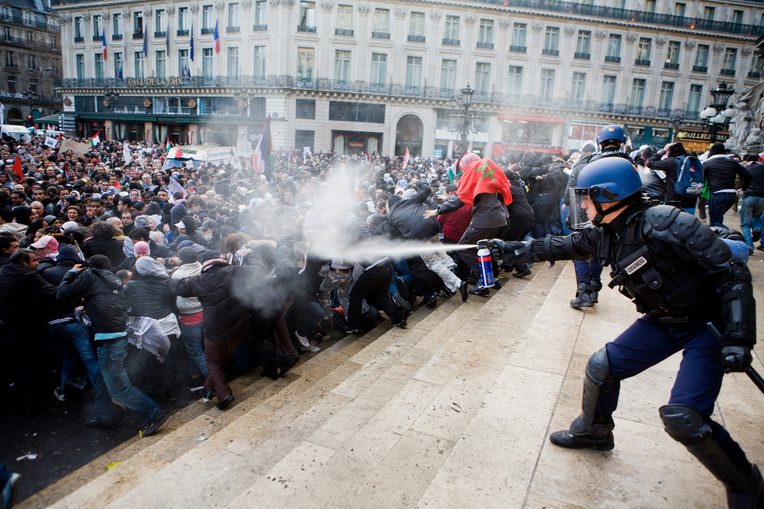
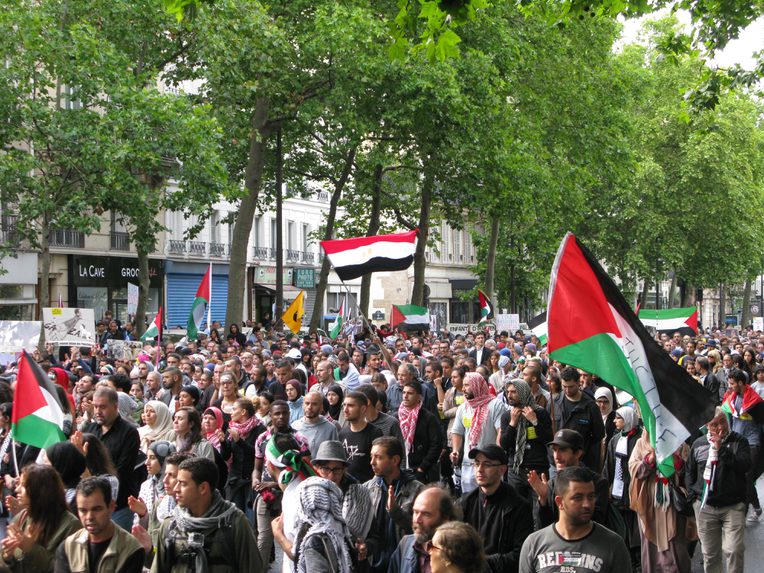
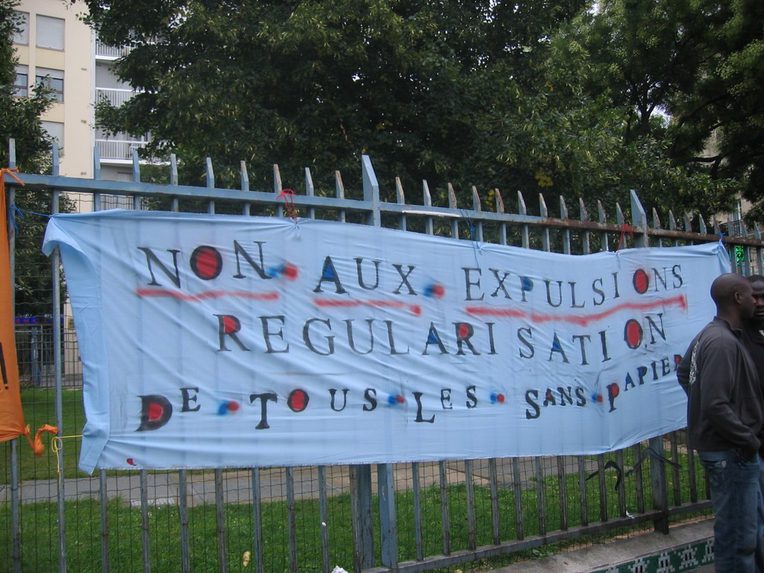
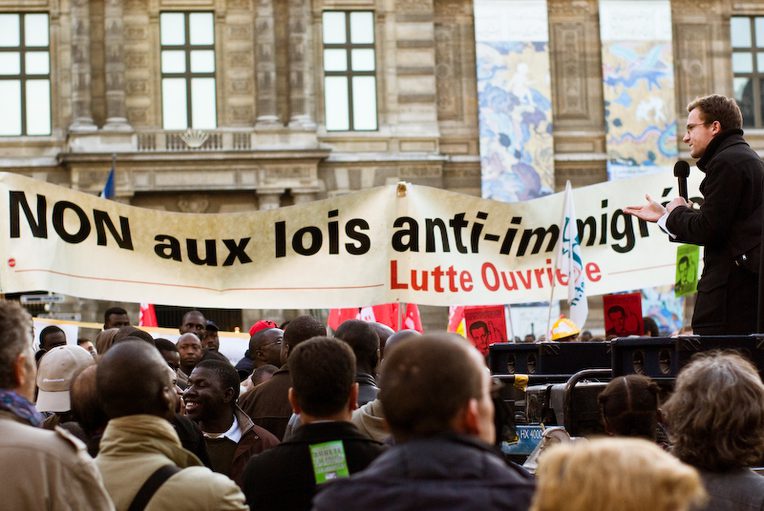
Multimedia Content
Documentary
Description: “France’s recent decision to ban the wearing of traditional Muslim headscarves in public schools—a law widely perceived in the Muslim community as an undemocratic expression of “Islamophobia”—has increased tensions between the French Republic and its largest minority population, numbering about five million people. Wide Angle explores this conflict in the town of Dammarie-les-Lys, a racially diverse, working-class community on the outskirts of Paris, where young Muslim women face a choice to obey the ban—or flout it. Also featured is the local high school principal who, as a member of the commission charged with reviewing the use of religious symbols in public life, voted for the ban against headscarves. In nearby Evry, we see the rector of the grand mosque leading Friday prayers and conducting the conversion of a young French man to Islam. Europe’s Muslim population has doubled in the last decade, with the largest numbers settling in France. Their presence is challenging traditional French notions of nationhood and citizenship, and their increasingly vocal demands for integration and recognition—on their own terms—is creating a crisis in the republic. Young, Muslim, and French reveals the hopes, frustrations, and political aspirations of second- and third-generation French-born Muslims and explores their potential to alter the landscape of France’s national identity.”
Producer: Micah Fink. Broadcast on PBS, Wide Angle, August 2004
Online Resources
Teaching Tools post on representations of Muslims in the media
France's Office of Immigration and Integration
Bloc Identitaire, an anti-immigration website